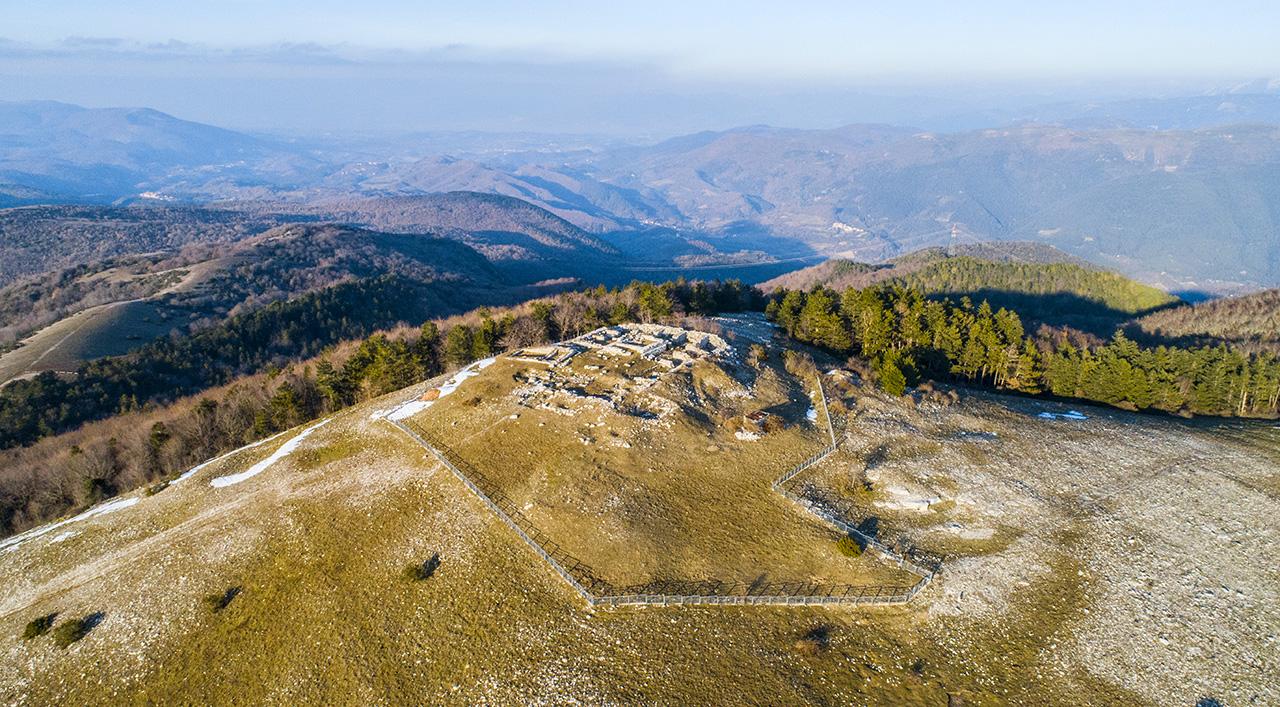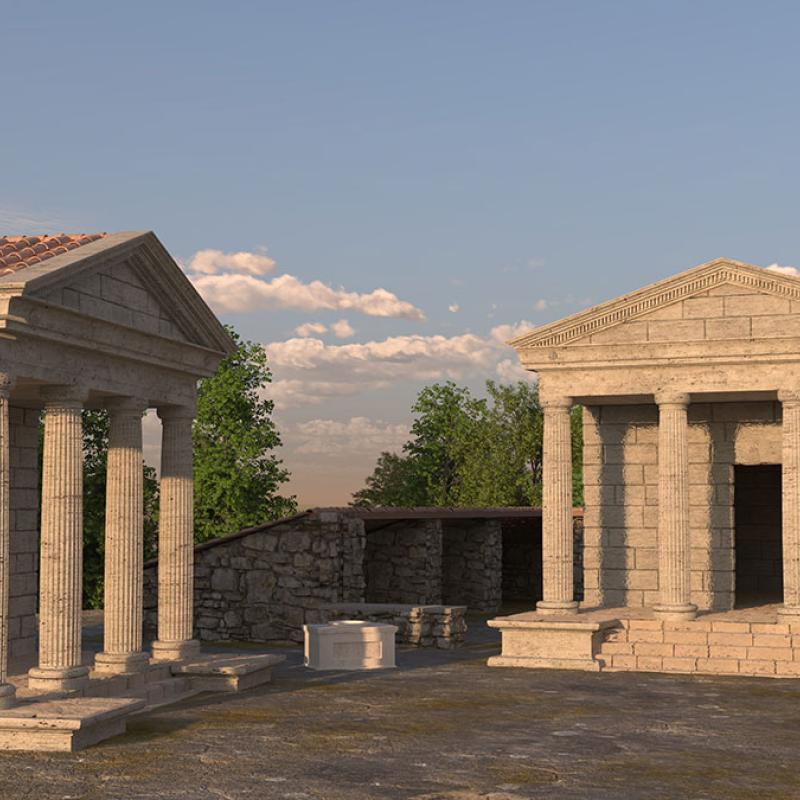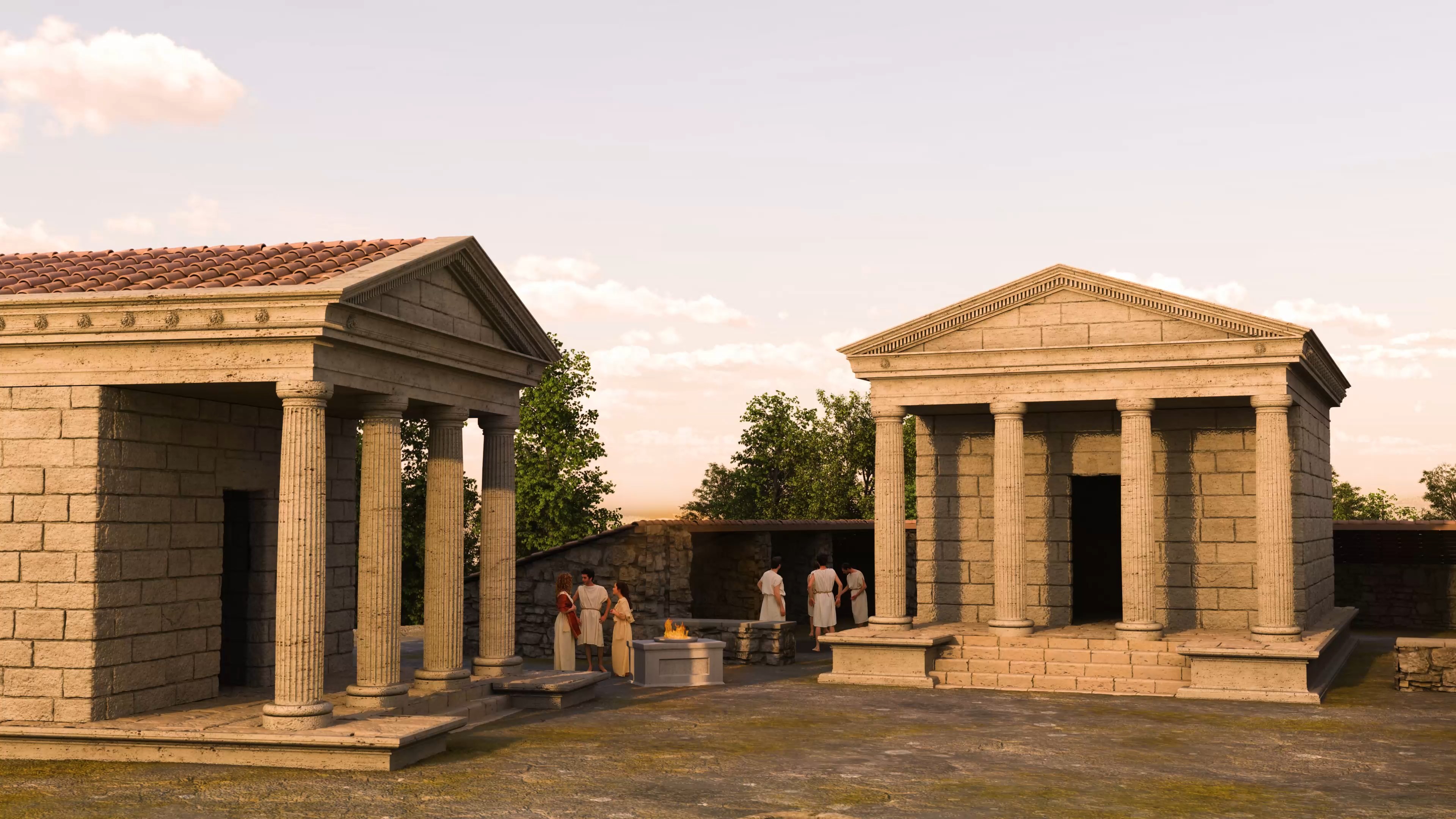Torre Maggiore mountain has always represented a visual and identifying landmark for the whole of the Terni area, since it is the most prominent point in the area and from here the Martani mountain chain begins, which closes the Terni valley stretching from Narni to Terni.
This role, highlighted by the presence of the ancient sanctuary, which has always been partially visible, remains preserved in the name of Ara Maior, attested in the 17th century, or Peracle Mountain, at the end of the 19th century.
In fact, the top of the mountain with its distinctive rounded shape, was artificially regularised and became the site of a sanctuary that can be considered as the fulcrum of a complex system of high-altitude sites attributable to the Naharci, all having an altitude going from 600 to 1000m, which thanks to their favourable position could be visually connected, even over considerable distances.
The area of the sanctuary, after the obliteration and destruction, was investigated and brought to light thanks to a series of systematic excavations by the then Umbria Superintendence for Archaeological Heritage.
What immerses is a stratified situation, the first original phase can be dated in the 6th cent. B.C., a period in which a flourishing of similar situations took place in different areas of Umbria, from Colfiorito to Gubbio, to Ancarano di Norcia, to be linked to the flourishing of Umbrian aristocracy.
In this first phase we have to imagine a place with no stable structures, but in any case already settled, with the presence of a funnel-shaped cavity dug into in the rock to which a small channel was connected. Elements that have always constituted the ideal centre of the sanctuary, the so-called mundus.
Inside the cavity many schematic bronzes attributable to the first stages of the sanctuary were found, which go from the 6th century right up to the late 4th cent. B.C. There were extremely schematic figures with nails, with only the head of the subject distinguishable, followed by the classic schematic representations of warriors, sometimes female figures and specimens portraying horses and cattle. Such figures were offered to the divinity (or divinities) of the sanctuary, in exchange for help or “for grace received”. Very important was the discovery of a gilded bronze arrow, with other examples of small bronze arrows, useful for hypothesizing the presence of the cult dedicated to Jupiter Fulgurator.
Around the middle of the 3rd cent B.C. the subsequent phase of monumentalisation can be placed, which can be connected with the arrival of Roman domination in Umbria, which began with the taking of Nequinum (Narni), in 300 and concluded with the deduction of the colony of Spoletium in 241 B.C. Since the place was perceived by the local communities as having an identity and of primary importance, the Romans respected it and, to accelerate the Romanisation of the territory, they introduced their religious and cultic practices, superimposing them on the previous ones.
Thus the structures we see today were built, including the enclosure wall (temenos), which surrounds the area, together with a series of rooms still visible and, initially, the structure of temple A, aligned with the entrance, recognizable thanks to a large stone slab and with a well, which is nothing more than the respectful monumentalisation of the previous original votives. The temple, perfectly east-west orientated is exactly on top of the mountain, had a pronaos and a cell, with a rectangular plan of about 11.80 x 7.90 metres and must have been preceded by steps leading to the entrance of the pronaos with 4 columns on the front.
The structure is in slightly ashlar squared work, certainly of local stone. The discovery of architectonical parts in local limestone allows us to hypothesise that the continuous frieze of the temple had a series of protomes in the shape of a lion’s head used as dripstones for rainwater from the roof. Certainly, in small rooms that surrounded the temple, the objects that the faithful offered to the deities must have been produced. This practice was widely attested in all ancient sanctuaries by a series of processing waste identified during archaeological investigations.
Of exceptional importance was the discovery of a female divinity head in the north-east corner of the sanctuary, with the hair divided by a central parting and with a diadem, the rear part not being worked, which is most certainly to be interpreted as an acrolith, i.e. the head of the cult statue was sculptured, the body of which was then made in different material.
At a later time, maybe in the late Republican era, a second temple was then built, similar in size to the first and always with 4 columns on the front. This time with a different construction technique, in cement covered with limestone slabs that simulated the squared ashlar work in continuity with the nearby temple A, indicating it is less ancient.
The role of sacred fulcrum of the whole territory was also firmly maintained in the following centuries of the Empire, as evidenced by a long series of identified material, including coins and ceramic shapes, which demonstrate a continuity of use at least until the entire 3rd cent. B.C.







